Thanks to extensive research by inbound marketing firms, we now understand the journey a buyer takes before they make a purchase.
It starts with an awareness of a problem or pain point, followed by the consideration of various solutions before finally reaching the decision stage. But what does this have to do with custom web design?
Generally, the buyer will go through their journey by way of research, comparison, and justification, at which point the buyer will be on the cusp of decision and purchase.
A well thought out and custom web design can effortlessly walk the customer through all stages of their journey by anticipating and addressing their needs through each step while building credibility and trust along the way.
As Buyers Research
It figures into the each phase of the buyer’s journey, research continues throughout, up to and often during the decision stage. Pardot’s State of Demand Generation Report found that 70% of consumers will return to search Google at least three times before buying. This is the time where you can begin to fine-tune content as you keep track of a repeat visitor’s increasing interest.
Website design at this stage should seek to differentiate on the basis of quality content. Accordingly, give the potential buyers the meaty information they are seeking.
Custom website design should promote the company’s best hard-hitting, zero fluff authoritative content that features the products or services in which that particular user has expressed interest. Consider requiring contact information in exchange for your most valuable content such as critical research, case studies, white papers or ebooks.
As Buyers Begin to Compare
When buyers begin to compare the offerings of each vendor, they will start to reach out to each for personalised information, such as quotes, demos or more information.
A custom website design with interactive help screens is an important way to tailor content by anticipating the buyer’s needs and questions.
Custom help desk forms give a mechanism to gather more information from the purchaser, as well as offer the information requested by the buyer, in a timely and efficient way. Both processes should use client specific information from the company’s automated marketing tool to create a custom help experience.
Content at this stage should include side by side comparisons that favour your business or differentiate it in such a way that sets you apart from the competitors they are likely considering.
As Buyers Seek to Justify
For a conversion to occur, the buyer may need final purchasing approval. At this point, buyers are going to need concrete evidence that they will use to justify your product or service over that offered by the competition.
Your custom web content should hone in, now, on the executive or C-suite.
Optimally, the content should show information previously presented, in terms of ROI and bottom line. A personalised web experience will make this process easy for the buyer by translating the very reasons that made them interested in your company, product or service, into language that will be persuasive to upper management and executives with purchasing control.
The goal is to arm the user with the right ammunition. They will then supply the adequate pressure needed to make a prompt decision in your favour.
Strong Call to Action
This is the time for a strong call to action (CTA) in which you facilitate a sense of urgency for buyers who are fence-sitting. It is important at this stage that you invite the prospective buyer to click for more information. Custom web design is essential in creating an effective call to action. Ultimately the design and copy should compel the user to click for more details. It should be nearly irresistible. In his article 3 Critical Principles of Effective Calls to Action, for Entrepreneur magazine, Aaron Agius advises:
A Great CTA is Visible
- Placement is key. Traditionally, CTAs are placed high on the page since most users never scroll down. However, a recent experiment showed that putting the CTA below the fold could increase conversion by more than 300%.
- Stand out from the website. This can be accomplished by choosing contrasting colours instead of blending by using the brand’s colour scheme.
- Be appropriately sized. Studies have shown that CTAs should be large but not overwhelmingly so, that it turns the customer away. A/B testing should be employed by the design team to discover the ideal size.
An Effective CTA Offers a Clear and Compelling Message
- Anticipate the user’s next question and then answer it.
- State clearly what you want them to do and why it will benefit them.
- Be robust and compelling, yet not make the user feel pressure.
A Strong CTA Uses Supportive Elements
- Testimonials are useful when placed in or near a CTA.
- Statistics, especially those that offer social proof are powerful.
- Always be truthful and transparent when using supportive statements or stats.
Anticipating the buyer’s journey is a crucial part of a successful inbound marketing campaign. The use of a responsive, intuitive custom website helps the buyer progress through the sales funnel effortlessly, providing essential information at crucial times, responsive or interactive forms and effective calls to action.
To discover how we can help you redesign your website to lead your buyers through the process of awareness, consideration, and committing, connect with us today or apply for a complimentary strategy session









